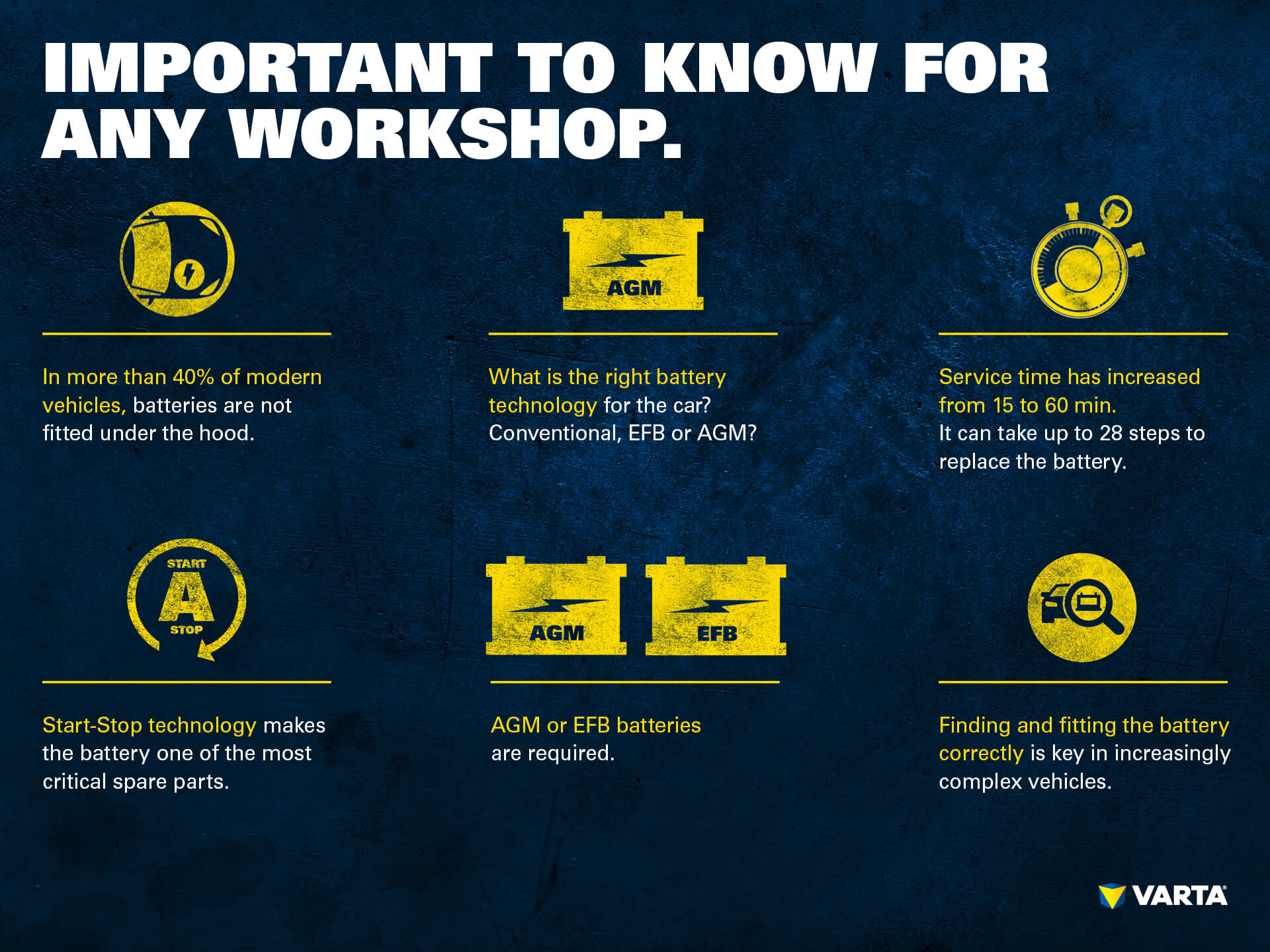How do I change an EFB or AGM battery?
This article contains:
Replacement of modern batteries is now considerably more complex than it was 20 years ago with conventional wet batteries. Up to 28 different steps are now necessary. This is just one of the reasons why replacement should be carried out by a specialist workshop. We have summarized the most important points below.
Where is the battery anyway?
The answer to this question used to be very simple: under the hood of course. Now things are completely different. If you open the hood of a modern car, you will often not find the battery. These days, only 58% of batteries are in the engine compartment. 40% are in the trunk and 2% are installed in the passenger compartment. For some models, seats may even need to be removed or carpets cut in order to access the battery. An extra airbag qualification is necessary to remove the seats, for which special training is required. This is another reason to have the replacement carried out by professionals.
Many steps and more time for battery changes
In a car with Start-stop technology the battery must only be replaced with a type which has been approved by the car manufacturer and which meet all of the necessary requirements. Due to the more complex on-board network, replacing a start-stop battery takes longer than for a conventional starter battery in a simple vehicle.
Replacing a modern start-stop battery takes up to 28 steps – which greatly increases the time which is required.

Linked on-board electronics
A start-stop battery is a part of the on-board electronics and is linked to the vehicle electronics via the Battery Management System (BMS) and the battery sensor (EBS). The control unit detects the number of starts and the energy flow, monitors the state of charge and controls charging. When a start-stop battery is replaced, the energy management system is programmed by the diagnostic device in the workshop.
Incorrect DIY replacement of a start-stop battery can cause malfunctions. A battery replacement which is not carried out correctly can cause restriction or even failure of the start-stop function, which can result in increased fuel consumption and restriction of the comfort functions. The experts in a workshop have been trained to handle current battery technology and are familiar with battery replacements. They also know that an AGM must always be replaced with an AGM and an EFB must at be replaced with an EFB or an AGM.
Replacement without loss of data
When an EFB or AGM is replaced, a specialist workshop takes a series of points into account, which guarantee that the battery functions properly later on. Because the car is temporarily without power during the battery replacement, important operating settings must be noted beforehand. Alternatively, a second battery can be connected to maintain the operating voltage.
Error messages and malfunctions after battery replacement
After the new battery has been installed and connected, the automatic start-stop system may not function for several hours. In this case, the workshop will inform the driver of this and give them the appropriate instructions. Drivers should contact the workshop directly in case of any malfunctions or error messages which occur after a start-stop battery has been replaced. In most cases, these are temporary and are due to incomplete data processing. In some cases, the vehicle requires genuine driving data to complete the setup. Some vehicle control units have a self-learning function, so that some of the error messages disappear automatically. In the VARTA Partner Portal workshops can find details of the procedures for replacing the battery for an automatic start-stop system, as well as the time which is required and which batteries are available as replacements.

